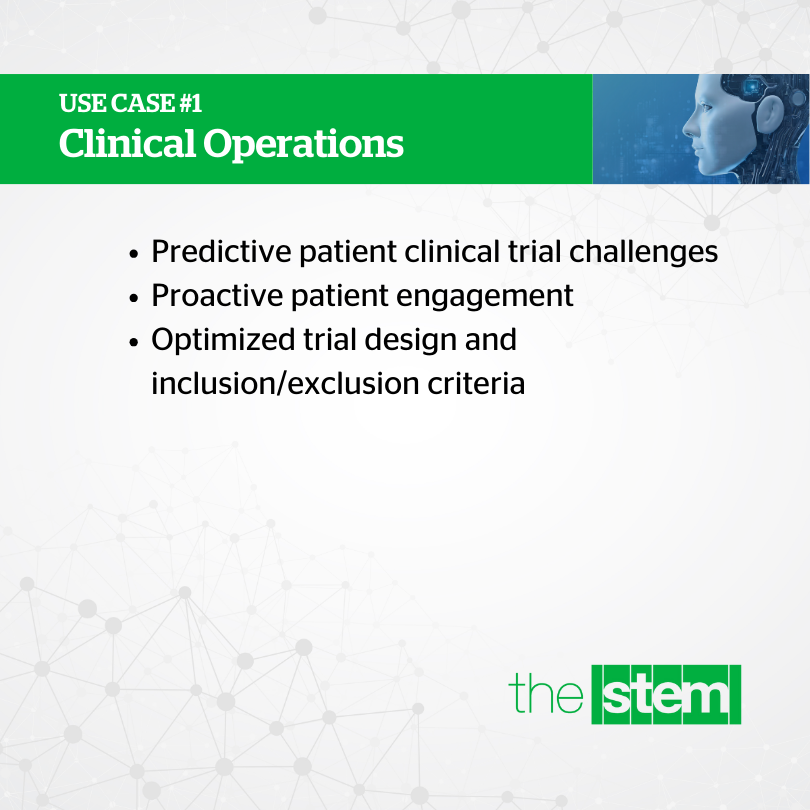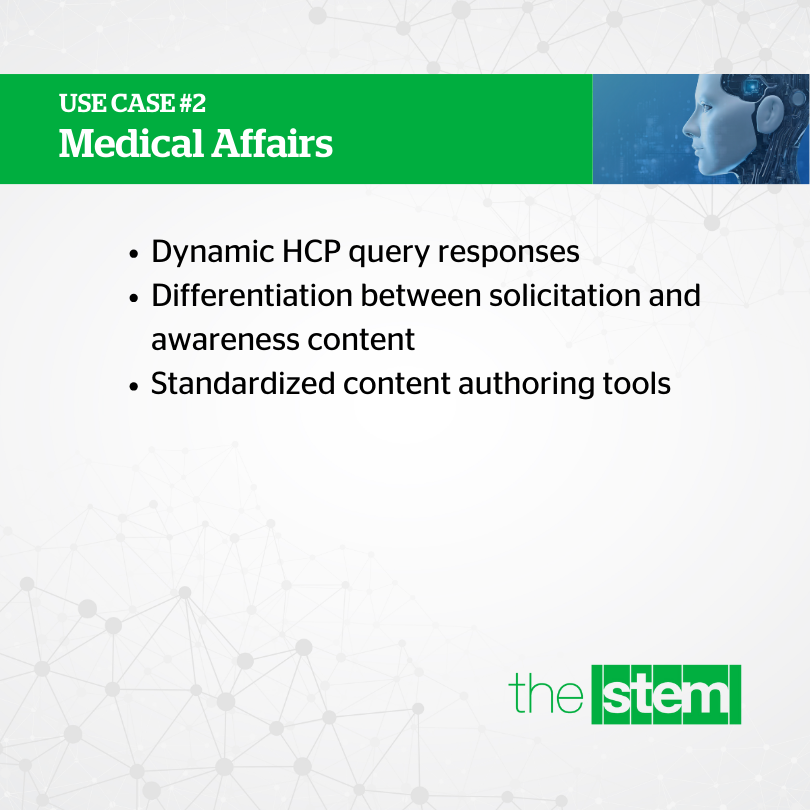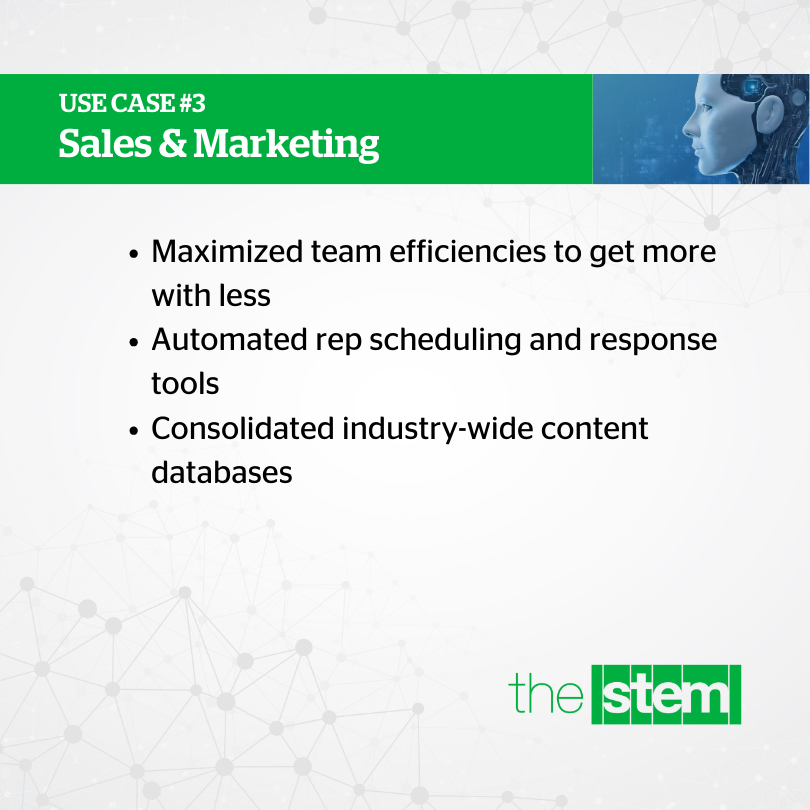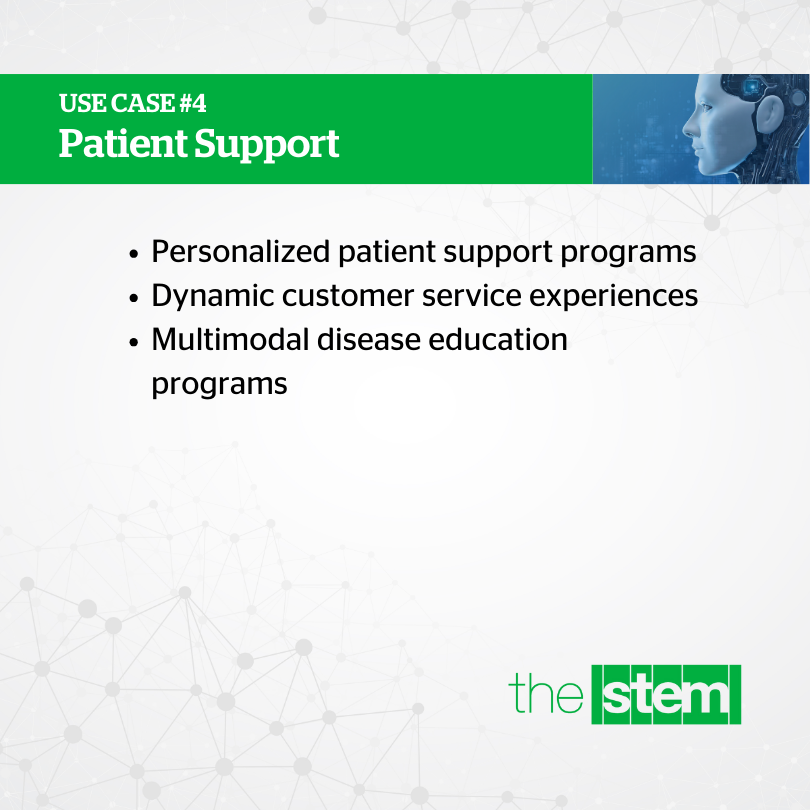ChatGPT is the fastest-growing application in history, exceeding 100 million users within two months of its launch on November 30, 2022. Within a year, the application has catapulted artificial intelligence into the mainstream, thrilling and terrifying pundits and the public with its potential. Whether it becomes a bigger boon than the Gutenberg press, as Microsoft CEO Satya Nadella predicts, or results in a dystopian future as Geoffrey Hinton, the “Godfather of AI,” believes, one thing is clear: the “AI Revolution” isn’t just hype.
Whether passing the bar, destroying companies, or spewing “hallucinations,” the awesome power of generative AI, spearheaded by ChatGPT and its rapidly spawning competitors, reverberates throughout society, across industries. Biopharma is no exception. Accustomed to disruption, despite the many limitations and risks imposed by tight regulations, biopharma is eager to benefit from these new capabilities.
Numerous articles have focused on potential applications throughout the drug development and commercialization life cycle, but few have elucidated tangible short- and long-term applications demonstrating its feasible and effective implementation. So we set out to explore specific use cases with industry experts (including Stem consultants and clients) to enable biopharma companies to integrate generative AI across five core functions: clinical operations, medical affairs, sales, marketing, and patient support.
Clinical operations: “Take existing systems to the next level”
 The pre-launch phase of the drug development process is arguably the most data- and stakeholder-intensive, lending itself to the benefits of AI. From protocol designs to site selection and management, patient recruitment and retention to drug supply management and adverse event reporting, data collection and analysis to risk management, the sheer volume of data and touchpoints can be overwhelming. Given the magnitude, it should come as no surprise that chatbots have already been used in this context for years.
The pre-launch phase of the drug development process is arguably the most data- and stakeholder-intensive, lending itself to the benefits of AI. From protocol designs to site selection and management, patient recruitment and retention to drug supply management and adverse event reporting, data collection and analysis to risk management, the sheer volume of data and touchpoints can be overwhelming. Given the magnitude, it should come as no surprise that chatbots have already been used in this context for years.
“AI and chatbots have been integrated within clinical operations for at least the last 10 years,” explains Shwen Gwee, a digital health leader and consultant who has been a senior advisor to major companies and a member of the MIT Hacking Medicine team. “My work with Memorial Health was an example, utilizing technology that analyzed patient history and treatment journey data to predict at which point in their clinical trial participants might experience challenges. The chatbot also proactively engaged participants based on that data to boost study adherence.”
Gwee describes protocol design as another area of clinical operations where legacy AI is now ripe for ChatGPT. “Study designs are written by humans, who either base it on a template or personal experience. That misses opportunities to optimize designs by factoring in everything from patient types to site requirements and past study results. Choosing optimal inclusion and exclusion criteria based on leveraging and analyzing the data from complex disease areas and patient populations will soon be possible with this advanced AI.”
Until recently, specialized chatbots relied on decision trees that responded to specific queries with pre-approved content. They were adept at churning predefined output, making recommendations, and even being predictive. “ChatGPT from OpenAI and their GPT-3 and -4 powered cousins can deliver the power of truly ‘Generative’ AI to biopharma,” says Gwee. “Next-gen chatbots are vastly more complex and natural in their language responses, raising a new set of concerns.”
Regulatory and legal teams demand accuracy and compliance, ensured by reviewing all content in advance. Since the generative power of ChatGPT and its brethren lies in the ability to create customized responses to diverse queries, what assurances can companies have that a bot’s output will never be violative, or become subject to any of those publicized “hallucinations”? “My guidance has been to feed only pre-approved content into any system,” assures Gwee. “They must pull from a restrictive, proprietary, and closed data set.”
Medical affairs: “Listen before you chatbot”
 Jennifer Riggins, medical affairs thought leader and expert in medical communications and digital solutions, agrees. “Healthcare professionals don’t have a lot of trust when they don’t know where your clinical answers come from. I’ve seen criticisms around authorship, the belief that robots can’t be an author of scientific papers, or even clinical trial results. So, in addition to only pulling from a closed data set, make sure sources are cited, every claim and detail thoroughly and precisely referenced. Trust is largely based on transparency.”
Jennifer Riggins, medical affairs thought leader and expert in medical communications and digital solutions, agrees. “Healthcare professionals don’t have a lot of trust when they don’t know where your clinical answers come from. I’ve seen criticisms around authorship, the belief that robots can’t be an author of scientific papers, or even clinical trial results. So, in addition to only pulling from a closed data set, make sure sources are cited, every claim and detail thoroughly and precisely referenced. Trust is largely based on transparency.”
Like clinical operations, medical affairs is complex and multifaceted, with numerous touchpoints where generative AI could add tremendous value. “An immediate beneficiary would be HCP medical information queries and searches.” For most companies the process is time consuming; with a ChatGPT plug-in, HCPs across multiple specialties can receive instantaneous and personalized support.
Riggins cites examples of this kind of controlled and compliant interaction in the travel and finance industries. “An open-ended interaction that can provide dynamic, efficient, and effective responses to a diverse array of queries would be amazing in med affairs. HCPs might have questions about dosing, patient support resources, sales rep visits, drug supplies, what have you. With everything monitored and recorded, appropriate responses made, risks such as adverse event reporting and other issues could also be better managed and mitigated.”
Unsolicited questions about off-label information are another potential challenge and implicit opportunity. The line between drug promotion and professional education is well-delineated, while an important role of the medical affairs team is to provide HCPs with all the data they need to succeed. “Teaching a bot how to differentiate between solicitation and awareness is subtle, but with the new technology entirely feasible. Welcome to the brave new world of med affairs!”
Making medical affairs liaisons more efficient is another benefit that Higgins cites. “Scheduling calls, keeping track of updates, and finding the right information are all challenging. The advanced search and engagement capabilities that could work so well for HCPs apply doubly so for our internal specialists. Speaking of which, content authoring tools would also be eagerly embraced, saving time in terms of standardization, repurposing, distribution, and authentication. Big companies might someday pool their archives for a truly scalable solution.”
Sales and marketing: “Personal non-personal promotion”
 Toon De Baere, senior director digital customer engagement Europe/Canada at AstraZeneca, has a similar vision. “Imagine all pharmaceutical companies providing important clinical information for their products, housed in a centralized, company-agnostic database. Physicians, liaisons, even patients could connect using an interface that independently answers their questions, provides resources, and helps manage these customer engagement relationships. The data would be open-ended, but all pre-approved and compliant.”
Toon De Baere, senior director digital customer engagement Europe/Canada at AstraZeneca, has a similar vision. “Imagine all pharmaceutical companies providing important clinical information for their products, housed in a centralized, company-agnostic database. Physicians, liaisons, even patients could connect using an interface that independently answers their questions, provides resources, and helps manage these customer engagement relationships. The data would be open-ended, but all pre-approved and compliant.”
In terms of content creation, De Baere is even more focused. Sales and marketing materials are often created in a laborious, time-intensive manner. The review cycles are long, and aside from some market research, the content is rarely analyzed for its effectiveness, or personalized for audience segments. “We’ve struggled to handle increasing complexity with our existing teams. Internal use of AI can heighten efficiencies to get even more done with everyone we have, and external use of AI can boost engagement and personalize each interaction.”
“We’re experiencing a total paradigm shift,” adds Glenn Butcher, another senior industry digital leader. “Before we know it, AI will be ubiquitous throughout our organizations. From content creation to regulatory approval, tactical development to media engagement, we’ll be able to see things and do things we never imagined. Yet, I don’t think that the next six months will be that different from today. Many still assume magic is happening in that black box. So, experts will need to educate all our people on how to think about these things in a more mature and meaningful way.”
Despite the knowledge and skepticism gap, Da Baere and Butcher see immediate opportunities in sales rep management and logistics. Akin to the enhanced operational capabilities suggested by Gwee and Higgins, rep tools such as reminders, schedulers, and even Veeva-integrated ChatGPT functionality could tremendously simplify tasks and provide reps with more impactful collateral. On the receiving end, HCPs could engage with next generation eDetails and practice management tools, which can provide additional dimensions of compelling detail to the data.
“In the old days, we literally spent years and the limited resources of huge teams trying to script every single answer to a chatbot script,” Da Baere says. “This new generation that’s powered by GPT scripts itself, in a way, and all we need to worry about is the data itself. And unlike a Google search, the bot interaction is like you are really having a conversation. Soon we will wonder why we’re building brand sites and doing ‘non-personal’ promotional campaigns.”
Patient support: “The chatbot will see you now”
 The potential for improved patient and caregiver engagement seems even more exciting. “In essence, you will not need a patient support program anymore, because your ChatGPT solution would be your patient support program,” Da Baere explains. “All the support resources could be available through the bot, making a website far less engaging, and essentially redundant.” Da Baere also speculates that actual conversations could populate the bot, thereby helping to formulate answers to difficult care questions that are expressed consistently, naturally, and empathetically.
The potential for improved patient and caregiver engagement seems even more exciting. “In essence, you will not need a patient support program anymore, because your ChatGPT solution would be your patient support program,” Da Baere explains. “All the support resources could be available through the bot, making a website far less engaging, and essentially redundant.” Da Baere also speculates that actual conversations could populate the bot, thereby helping to formulate answers to difficult care questions that are expressed consistently, naturally, and empathetically.
As the power of generative AI expands into patient support and direct-to-
consumer marketing, sensitivity to regulatory and privacy consideration will be vital. Like the evolution of social media engagement and marketing for pharma, integration and adoption must be methodical and iterative. As consumers gradually increase their own utilization of ChatGPT-integrated devices, digital services, and brand experiences, biopharma companies will have an opportunity to meet them in the middle, and by then hopefully be ready in a manner that remains risk-averse and compliant.
“Based on my experience integrating earlier versions of these bots,, my guidance is to start with medical affairs,” Gwee says. “Their data is thoroughly vetted, their audience is professional, and their channels of communication are closed. With limited exposure and approved content, you can then experiment with specific touchpoints, get the legal and regulatory folks accustomed to this new way of communicating, and build the plane as you fly it. Don’t hesitate to bring in outside help, just like the early days of digital and social.”
“This won’t happen overnight,” Butcher insists. “Transformation is inevitable, but it needs to be ushered in with leadership and education.” Da Baere adds, “Disruptive change can only happen from the top, down. I’ve never seen anything effective happen from only grassroots interest or support. Senior leadership must first understand and embrace the possibilities, and then mandate a careful, focused approach to figure out what might work. Outside experts and consultants will have to be brought in at first, so that we can learn and take things from there.”
The good news is that within only the past year, ChatGPT-based startups have mushroomed, integrated across every milestone of development and commercialization. From bots that make EHR information and HCP-patient interactions more conversational, to medical records management and managed care processing more efficient, to introducing the tech as a point-of-care diagnostic and treatment tool, and all the way to the pharmacy, generative AI is entering the treatment journey from every angle. A bit late to the plate as usual, biopharma is stepping up.
Implementation: “One step at a time…”
With the FDA having issued its perspective on drug research and development, the floodgates are already open for ChatGPT into every biopharma function. The ability of AI to integrate, analyze, and simplify voluminous, complex clinical data is unparalleled, but how does one simplify the value proposition, and initiate an implementation within your own organization?
- Step 1: Educate senior leadership
The technology is nascent, and its applications are beta tests at best. Bring in experts to describe the generative AI landscape and demonstrate best-in-class examples of ChatGPT in action at various touchpoints and for various audiences. - Step 2: Choose a pilot program
Work with internal and external stakeholders to identify a potential “quick win” implementing a ChatGPT experience. Gwee recommends starting with medical affairs, but the decision is up to you and your organization’s sweet spots. - Step 3: Crawl, walk, chat
Get buy-in from leadership, specialty teams, and regulatory from the beginning. Determine realistic success factors, and test, test, test before exposing the new technology to any external audiences, especially patients and caregivers. - Step 4: Measure, analyze, iterate
Work in agile sprints, and stay flexible. Your goal is to create your own internal generative AI/ChatGPT expertise that can then be repurposed and scaled throughout your organization, evolving as you go. medadnews

